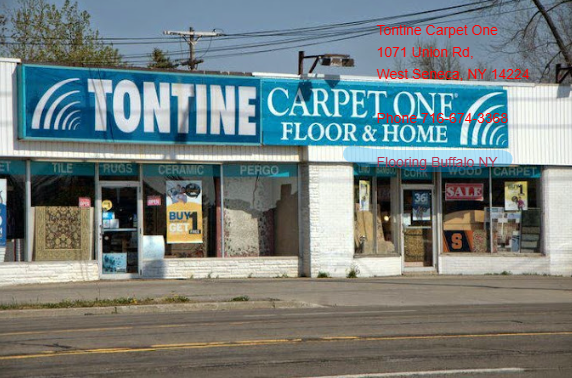Introduction
When we stroll by way of a beautifully adorned domestic, our eyes primarily fall upon the carpeting that serves as equally a groundwork and a remark piece. Carpets can increase areas, featuring warmth, convenience, and a classy charm. But have you ever puzzled how carpet kinds evolved over the years? From luxurious Persian rugs to fashionable minimalist designs, the adventure of carpeting types displays societal alterations, technological developments, and evolving tastes.
In this newsletter, we’ll explore The Evolution of Carpeting Styles Over the Years in detail. We'll delve into historical context, material used, design traits, and recent suggestions in the carpet business. Whether you're on the search for carpets Buffalo NY, Hardwood Flooring Buffalo NY, or absolutely exploring ideas at your regional Buffalo Carpet Store, this article will grant insights into how carpets have changed through the years.
The Evolution of Carpeting Styles Over the Years
A Brief History of Carpeting
Carpeting has a prosperous history relationship to come back countless numbers of years. Initially created for practical purposes, carpets evolved into decorative art bureaucracy that meditated cultural values and inventions.
Early Beginnings: The Origin of Rugs
- Persian Influence: Persian rugs are among the many oldest ordinary carpets, courting lower back to around 500 BC. Their elaborate designs characteristically function floral motifs and geometric patterns. Navajo Weaving: In North America, Native American tribes just like the Navajo begun weaving their own uncommon rugs as early as the 17th century.
These early carpets were no longer in basic terms practical yet also served as status symbols inside their respective cultures.
The Middle Ages: A Shift in Functionality
As societies developed for the period of the Middle Ages, carpets transitioned from being purely utilitarian to serving as decorative resources in castles and churches throughout Europe. The use of wealthy colors and elaborate designs was well-known.
Renaissance to Industrial Revolution: The Rise of Luxury Carpets
Renaissance Flourishes
During the Renaissance period (14th to 17th centuries), European royalty commissioned awesome tapestries and carpets for their homes. These textiles featured brilliant shades and depicted scenes from mythology or nature.
Industrial Innovations
The Industrial Revolution in the 18th century marked a fabulous turning point for carpeting styles:
- Mass Production: With improvements in machinery, carpets might be produced on a bigger scale. Synthetic Fibers: The advent of artificial fibers provided sturdiness at lower expenses.
20th Century: Diverse Styles Emerge
As we entered the twentieth century, carpeting started out to diversify added:
Mid-Century Modern Designs
The mid-century cutting-edge move emphasised simplicity and performance. Carpets inclusive of shag rugs turned into typical by way of their textural traits.
Post-War Era Trends
After World War II, there has been a surge in suburban dwelling which motivated carpet layout:
- Wall-to-wall carpeting changed into a staple in lots of houses. Bright colorings like avocado green and mustard yellow mirrored widespread tradition during this period.
Contemporary Trends: Sustainable Practices and Technology
Today’s carpets replicate modern-day approach to life alternatives with an emphasis on sustainability and expertise:
Eco-Friendly Materials
Many shoppers at the moment are seeking sustainable techniques made from recycled supplies or organic fibers. This shift is obvious at regional floors retail outlets like Tontine Carpet One Buffalo NY.
Technological Advancements
Innovations along with stain-resistant solutions and stepped forward installation systems have made sustaining carpets easier than ever until now.
Materials Used in Carpet Making Through Time
Natural vs Synthetic Fibers: A Comparative Analysis
When discussing carpet elements through the years, it’s vital to think equally average and man made fibers:
| Material Type | Characteristics | Advantages | Disadvantages | |-------------------|-----------------------------------------------------|-----------------------------------------|-------------------------------------| | Natural Fibers | Wool, cotton, jute | Eco-friendly; steeply-priced sense | Can be expensive | | Synthetic Fibers | Nylon, polyester | Durable; stain-resistant | Less breathable |
Wool: The Classic Choice
Wool has been revered for its sturdiness and high priced texture at some stage in heritage. It retains warm temperature nicely and is naturally immune to dust.
Nylon: A Modern Marvel
Introduced within the mid-20th century, nylon immediately turned familiar due to the its resilience against put on and tear—splendid for high-visitors spaces like hallways or dwelling rooms.
Design Trends Across Different Eras
Victorian Patterns: Opulence Redefined
In Victorian occasions (nineteenth century), ornate patterns ruled carpet designs with floral motifs reflecting wealth.

Art Deco Inspirations
Art Deco (1920s) delivered geometric shapes into consciousness—offering ambitious contrasts that still resonate as of late.

Influence of Culture on Carpet Design
Cultural Significance
Every subculture has its unusual contribution to carpet making—from Persian motifs celebrating nature to Navajo patterns reflecting storytelling.
Regional Styles
Each place showcases exceptional http://marioponc374.image-perth.org/how-to-choose-between-tiles-and-lvp-for-your-bathroom-remodel features established on out there parts or basic suggestions—assume Turkish kilims as opposed to Indian dhurries!
FAQs
1. What are some fashionable kinds of carpeting?
There are a considerable number of versions along with loop pile, minimize pile (like plush), frieze (twisted), Berber (looped & textured). Each provides assorted aesthetics & alleviation degrees!
2. How do I settle on a carpet elegant on life style?

three. Are eco-friendly carpets value it?
Absolutely! They not solely make contributions in opposition t sustainability however can also supply greater air exceptional merits! Many eco-friendly brands now have chic offerings too!
four. How many times should always I change my carpet?
Typically each 5-10 years based on utilization & repairs! Regular cleaning can expand its lifestyles appreciably!
five. What’s trending excellent now in carpeting kinds?
Current traits emphasize textures—consider shaggy seems to be paired with neutral hues! Also multi-sensible edge rugs are particularly usual!
6. Can I installation carpet myself?
While DIY set up is likely exceptionally with modular tiles; professional set up guarantees flawless results highly for wall-to-wall fittings!
Conclusion
As we replicate on The Evolution of Carpeting Styles Over the Years, or not it's transparent that those humble textiles tell studies some distance beyond aesthetics—they encapsulate cultural identities whereas adapting with time's currents! Whether you’re travelling your neighborhood Buffalo Carpet Store or deciding among possibilities at Tontine Carpet One Buffalo NY; understanding this evolution enhances appreciation in your preferences at present!
From ordinary fibers steeped in custom to modern day synthetic techniques; our reference to ground remains profound! So subsequent time you walk throughout your plush dwelling room carpet do not forget—it’s greater than just textile underfoot—it’s background woven into each and every thread!